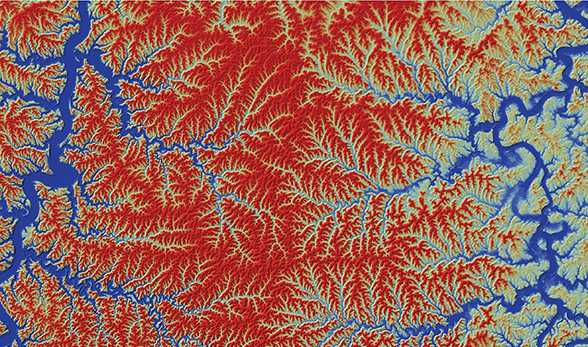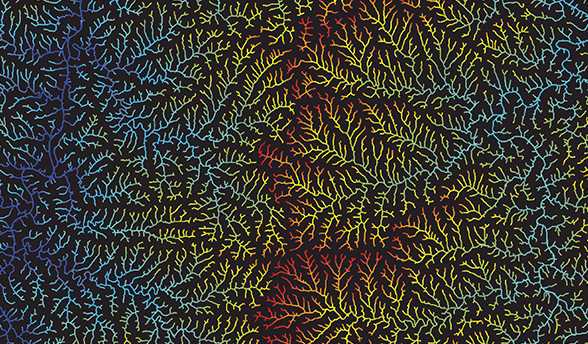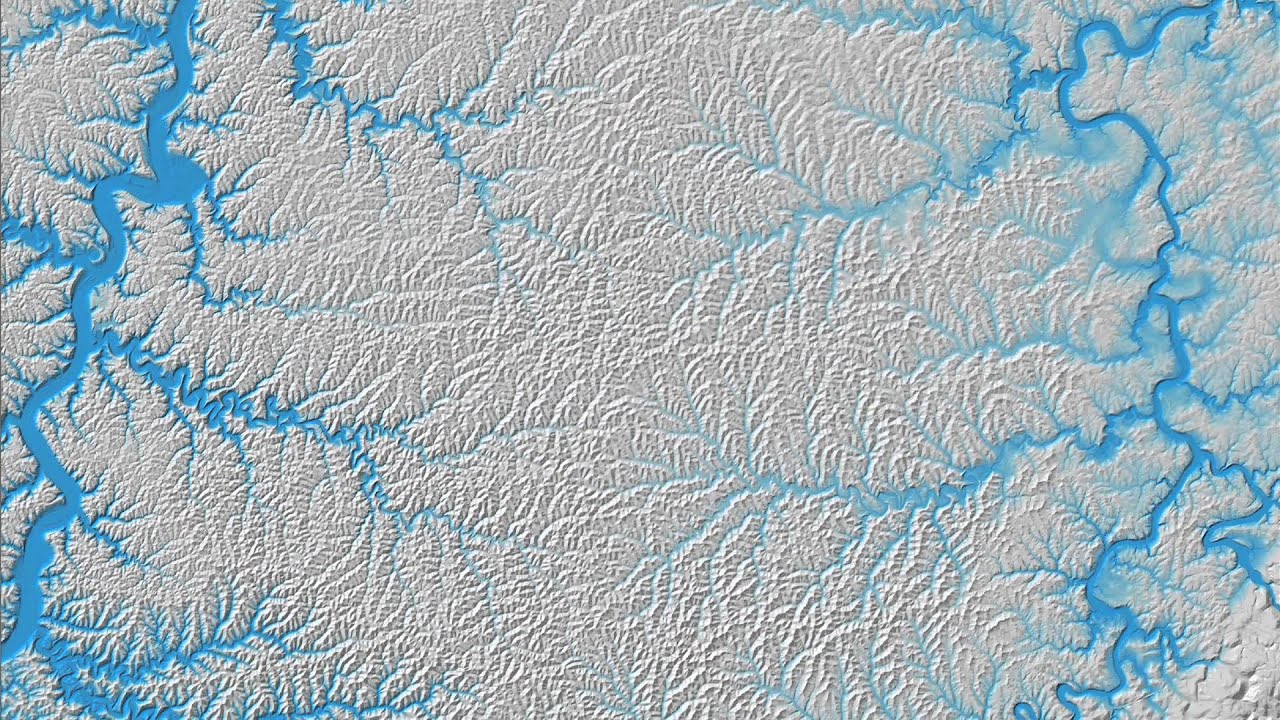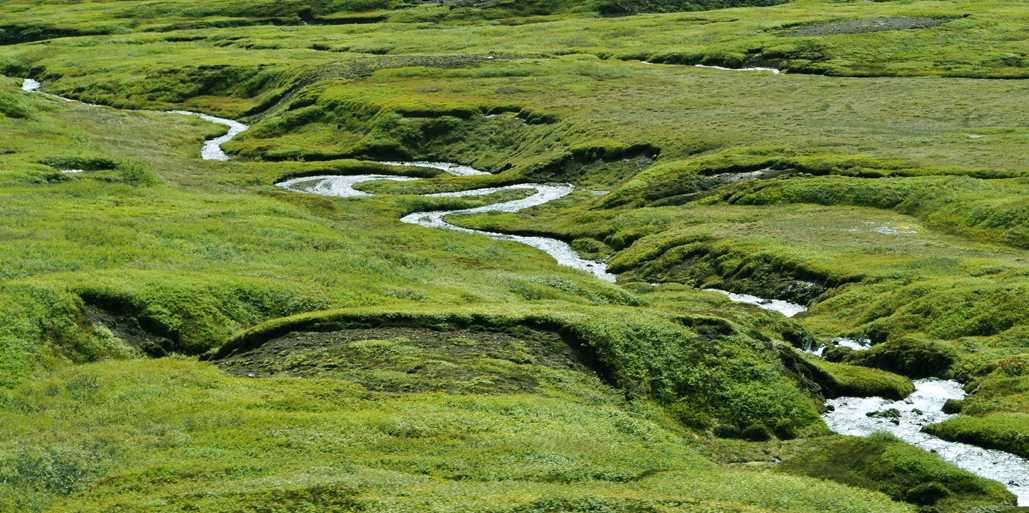Restless rivers
The surface of the earth is covered by a patchwork of river channels. These form the backbone of the landscape, defining boundaries or permitting communication between diverse ecosystems. However, river networks might be much more dynamic than has previously been assumed as demonstrated by researchers at ETH Zurich and MIT in Boston.
The Tiber flowed through Rome during the time of Julius Caesar and continues to flow under the throngs of tourists today as they cross over the Ponte Sant’Angelo. Our image of rivers is that of unchangeable features in a landscape. This impression may be wrong as researchers at MIT and ETH Zurich have now shown: river channels are far more changeable than had been previously assumed. For the first time, researchers can make projections about how and in which direction they will migrate.
Sean Willett, ETH Professor at the Institute of Geology and his colleagues at the ETH and from the Massachusetts Institute of Technology (MIT), have developed a calculation method which determines the degree of equilibrium between river catchments. The more balanced neighbouring river catchments are, the less they will change their course over time. If river systems are in a state of disequilibrium, the river network shifts to recreate a balance. This implies that branches of a river migrate. “It may even mean that one river captures a channel from another, thereby changing its direction of flow”, explains Willett.
The pursuit of equilibrium

When rain falls on the Earth’s surface, it initially collects in rivulets, that flow together to form streams and eventually rivers. The area that drains to a single point on the landscape defines a water catchment. Two water catchments are separated by a ridgeline, called a water divide. If the land surface, or the river channels on either side of a water divide vary in steepness, one catchment erodes faster than the other, implying an imbalance between the two. Over the course of time the water eats away one side of the divide faster than the other, leading to migration of that divide until both catchments are in balance.

Using a new calculation method, which employs a metric based on the geometric characteristics of the river network, Willett and his colleagues examined three large river systems and the surrounding landscapes: the Loess Plateau in China, the eastern Central Range in Taiwan and the south-eastern USA. On the tectonically stable Loess Plateau the river network has almost achieved a perfect state of equilibrium, whereas in the geologically young Central Range of Taiwan there is still a high degree of imbalance. Hence most of the river courses are undergoing continuous, albeit slow, change. Based on their calculations, the researchers can also predict the direction in which the boundaries between the water catchments will migrate.
Dynamic landscapes and biodiversity
The results in the south-eastern USA were particularly surprising. Although the region has been relatively stable for hundreds of millions of years – i.e. has not been modified by plate tectonics or earthquakes – the river systems there are out of balance and the water divides are in motion. The researchers can read from the degree of disequilibrium between the catchments of two rivers in Georgia and South Carolina that the Savannah River has captured the upper channels of the Apalachicola River. Other researchers had already provided evidence of this event, but this new study provides independent confirmation. Such events are particularly important to the evolution of aquatic animals and plants. Changes in the landscape can either isolate or mix populations, leading to changes in the gene pool and subsequent evolutionary path.
Rivers are not just ecosystems themselves; they, or their water divides, define the natural boundary between different ecosystems. The dynamics of river courses and biodiversity are directly interlinked. The more a landscape changes – and rivers are a driving force behind such changes – the more likely the composition of the species living in this area will change. The rich biodiversity of the US-American south-east, which is a biodiversity hotspot, may well be influenced by the dynamics of the river systems.
Deciphering River History
“Currently, scientists believe it takes one to a few tens of millions of years for a river system to achieve equilibrium”, says Willett. Looking at the south-eastern USA, where there has been little or no tectonic activity for 200 million years, the river systems are still out of balance. It seems that equilibrium takes more like several hundred million years to achieve. “On this timescale, most landscapes are modified by tectonics, earthquakes or volcanic eruptions, so it may be that river systems rarely reach equilibrium.”
Using their new analysis method Willett and his colleagues now want to examine other river systems on Earth to investigate their dynamics. Willett wants to take a closer look at the influence of different types of tectonic activity and how changing climatic conditions influence river dynamics. This new analysis method should provide a valuable tool in understanding how river networks have evolved over millions of years and how this imprints itself in the modern landscape.
external pagePress releasecall_made and Video by MIT News:

Further reading
Willett SD, McCoy SW, Perron JT, Goren L, Chen CY: Dynamic Reorganization of River Basins. Science, March 6, 2014, DOI: external page10.1126/science.1248765call_made

